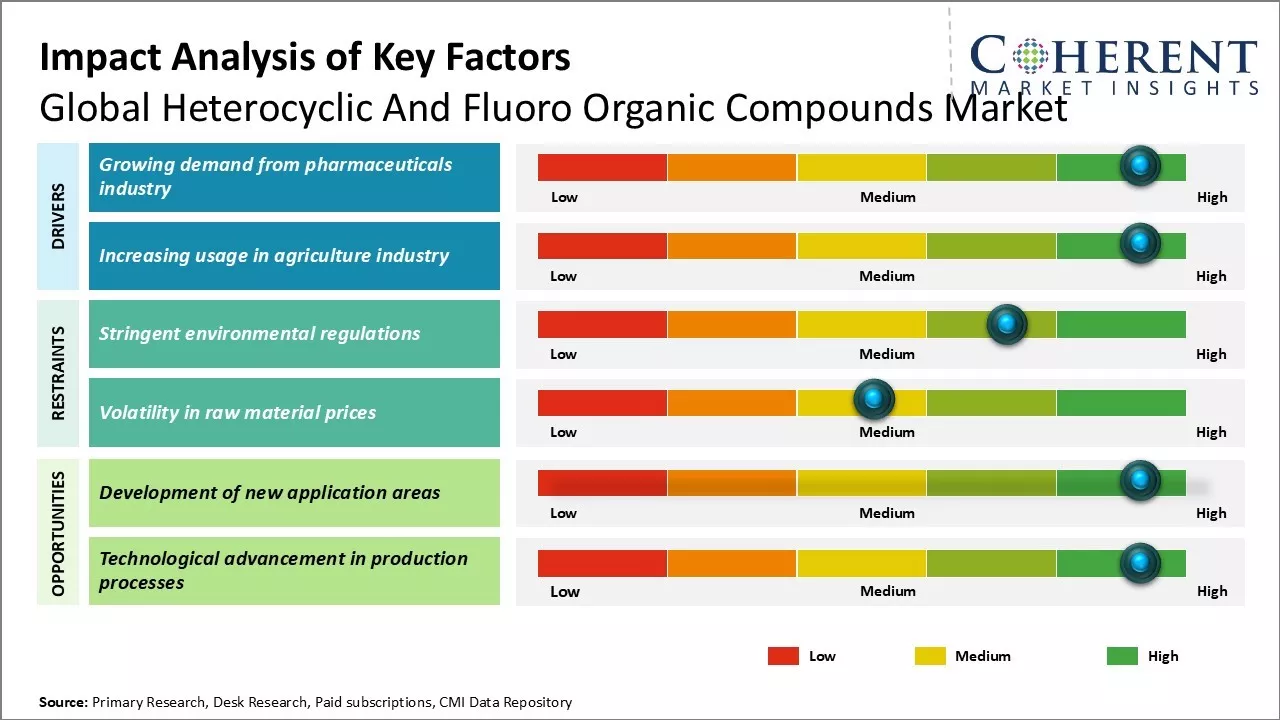The global heterocyclic and fluoro organic compounds market is estimated to be valued at USD 616.7 Mn in 2025 and is expected to reach USD 1,017.2 Mn by 2032, growing at a compound annual growth rate (CAGR) of 7.4% from 2025 to 2032.

To learn more about this report, Request sample copy
The market has been witnessing steady growth over the past few years driven by increasing demand from various end-use industries such as pharmaceuticals, agrochemicals, and other industrial applications.
Market Driver - Growing demand from pharmaceuticals industry
The global pharmaceutical industry has seen tremendous growth over the past few decades. With advancing medical research and development of new drugs, pharmaceutical companies are constantly exploring heterocyclic and fluoro organic compounds for drug discovery. Heterocyclic compounds contain rings with more than one type of atom and have emerged as important pharmacophores due to their diverse range of biological activities. Many drugs currently in the market contain heterocyclic cores that make them efficacious. Fluoro organic compounds are also gaining significance as fluorine substitution enhances the lipophilicity and metabolic stability of drug molecules.
A majority of new molecular entities approved by regulatory authorities contain heterocyclic and fluoro functional groups. In the pursuit of precision medicines with novel mechanisms of action, pharmaceutical firms are actively screening libraries containing millions of heterocyclic and fluorinated compounds. This screening process identifies highly potent lead compounds for developing treatments against cancer, neurological disorders, cardiovascular diseases, and various other therapeutic areas. Furthermore, drug repurposing activities involve modifications to existing drug structures through incorporation of heterocyclic and fluoro substituents in order to enhance the pharmacological profile. This trend of drug optimization is expected to sustain the demand from pharmaceutical companies.
Clinical trials also involve the synthesis and evaluation of various heterocyclic and fluorinated derivatives of lead molecules to select candidates with optimized pharmacokinetic and safety profiles. As patent cliffs threaten the revenue stream of blockbuster drugs, pharmaceutical giants are investing heavily in R&D to develop differentiated products having heterocyclic chemistry and fluorine substitution at their core. Overall, the need for novel, effective and safe drugs presents a massive market opportunity for heterocyclic and fluoro organic compounds in the pharmaceutical sector.
Joining thousands of companies around the world committed to making the Excellent Business Solutions.
View All Our Clients